Ascending God's Rooftop, Pt 2: The Journey to Himachal Pradesh, India’s Himalayas
Ascending God's Rooftop is a multi-part series about my recent travels to India, particularly Himachal Pradesh. This time I talk about Kasauli and observations about village life.
Villagers watch us from inside their corner shops as our car inches through traffic. What do they think of us? Out-of-towners, these foreigners with cameras pointed, looking onto their lives like it’s a spectacle.
Glimmers of village life and its charms glide passed. Small traders perched in slender shops stacked with crates of fresh, local vegetables and plastic bits of tat courtesy China just barely north of here.
We are moments away from Kasauli, a mountain town skirting 6000 ft above sea level. The air is cooler here. The fresh breeze tingles with mist and the scent of trees. Kasauli was a cantonment and hill station occupied by the British Raj seeking reprieve in the Himachali mountains to escape the summer heat. Here, the British built churches—as if religion was in short supply in India.
I know a bit about mountain villages.
Our old family visits to Tobago inevitably surrendered to a ‘drive around the island’. Tobago’s central Main Ridge mountains are laced with thin roads that connect the island through the interior.
Here too village lives unfold. Ladies amble down steep hillsides in their Sunday best where a bus takes them to Baptist church. Kids play cricket in the street with sticks and tennis balls. Dogs lay motionless in the road seemingly impervious to the threat of imminent death from oncoming cars. You will find little shacks under the quiet shade of a mango tree on the corners of these mountain roads, like the ones I see here in Kasauli, except a Tobagonian corner shop is panelled in old Crix and Carib beer posters. Kasauli’s shops sport vivid bags of spiced snacks, potatoes and Coca-Cola.
These are our refill stations. Refuges of supply for pre-beach detritus like bagged ice, “sweet drinks” and rum punch’s accoutrement. I look back with amusement that these little shops—these hillside bodegas—sold single cigarettes to a kid from a jar after his Dad told him to run inside to get some.
They were different times.
Daleside Manor & The Outskirts of Kasauli
Village life in Kasauli is its time capsule. Life’s moved on since British occupation, but Kasauli retains a certain charm of a time gone by—and that’s partly why I’m here.
We stay in Daleside Manor, a property beautifully restored in a colonial style with breathtaking views across the green Shimla Hills. There’s a hunting lodge feel about Daleside Manor, and the restaurant churns out beastly portions of gutsy fare intended to fuel long walks in these hills.
There’s a generosity at Daleside Manor that speaks to its boutique proposition (only 12 rooms and four suites). The team are unsure of us city mice from Dubai, but they light up when you ask to talk about Kasauli and the wider area. There’s a pride in their eyes and a list of things pour from their mouths. Armed with a fistful of plans, we down glasses of Jamun gin made in the nearby Kasauli Brewery and we settle in for the night. We have a long day tomorrow. After all, we lost a day just getting here.
Kasauli Heritage Market
Phrases like “Heritage Market” create expectations. Some may reasonably expect it to be a time capsule holding onto tradition with sincerity, if not by the tips of its fingers. Kasauli Heritage Market does not fulfill this quaint image.
Kasauli Heritage Market is a relic from British occupation where locals sold supplies to British soldiers from cabana-like structures.
Nowadays, Kasauli Heritage Market is tourist fodder replete with haberdashers and eateries pumping out quick bites for those in search of momos, samosa pavs and TikTok content. Narinder’s Sweets provides the last two in ample supply.
I want to be positive about this and, to be fair, we did meet charming people, like the family that owns Mom’s Kitchen where we ate excellent vegetarian kebabs, fried until crisp, nutty and golden. We both agree that Narinder’s samosa pav is better than expected due to a sweet-sour chutney that I still taste when I think about it.
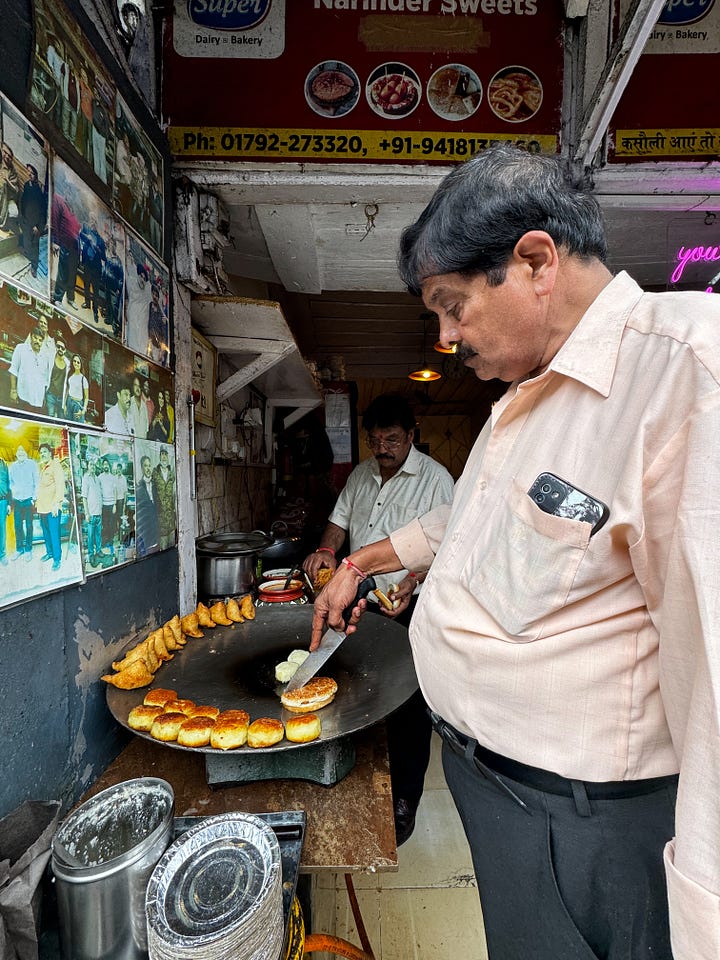


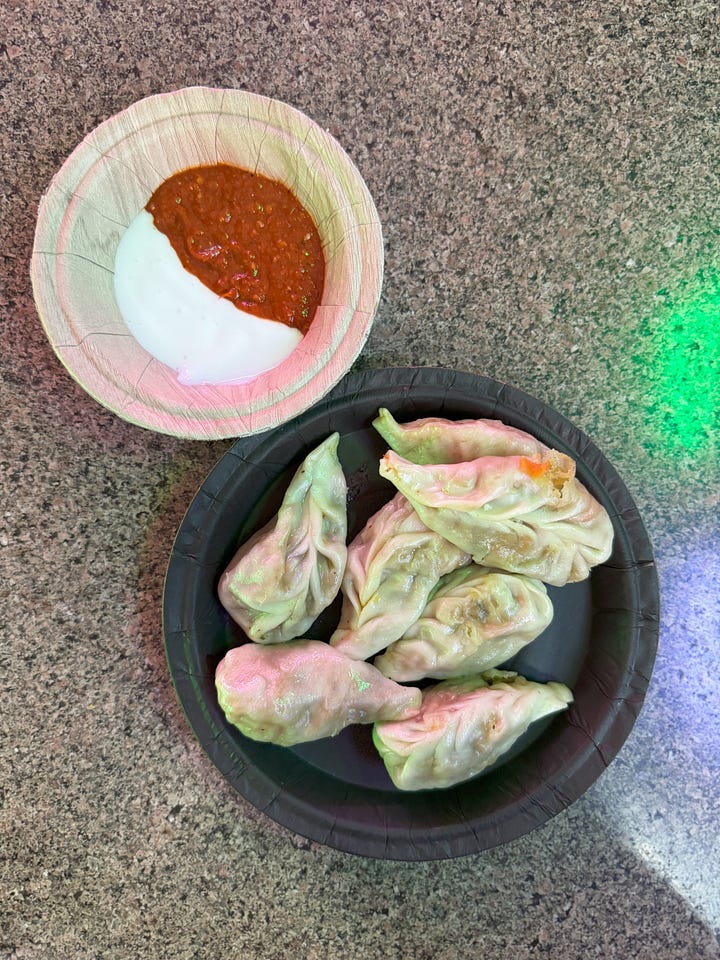
I hoped for a bite of authentic Himachali cuisine. I am just a food writer standing before a food market asking it for something good to write about.
Regrettably, Kasauli Heritage Market pumps out what tourists want and authenticity is expandable. They sell what sells. My travel companion felt the same. So, graze, grab photos and avoid the menacing monkeys that look down on you, both condescendingly and from a height.
The best way out is through to the other side where more of that real village life unfurls.
Spice traders wax lyrical about their stock with enthusiasm and ability, nevermind they must be weary of tourists like us. Everything from lentils to yak leather. Yes, yak leather.
Passing moments of real everyday life presented itself. A Baptist church so precariously built into the mountain side, only God could save it from the landslides. A child’s playground overlooks breathtaking views that, today, are wrapped in ribbons of mist. An old magistrates court and prosecutors’ office at the end of the broken and over grown track that brought a wry smile to these two visiting lawyers: imagine, if this was our lives? Both of us left our respective home countries where scenes like these were a possibility.
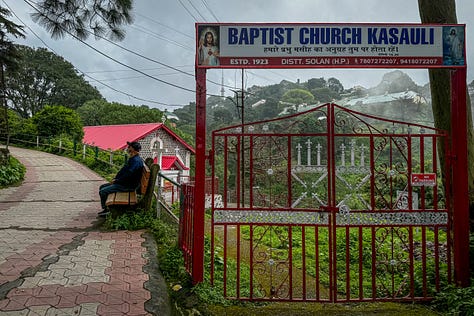
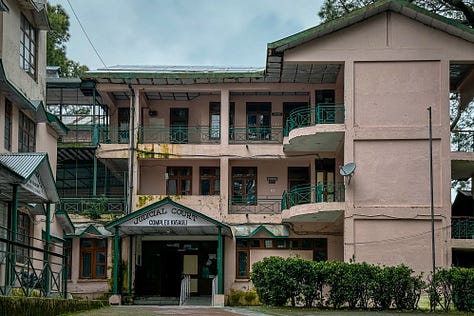
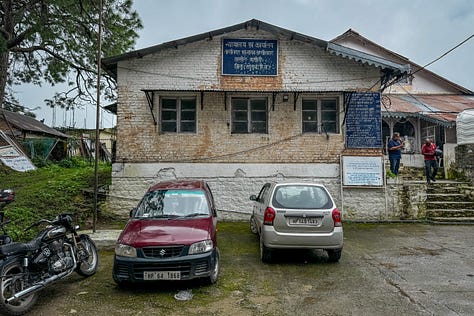
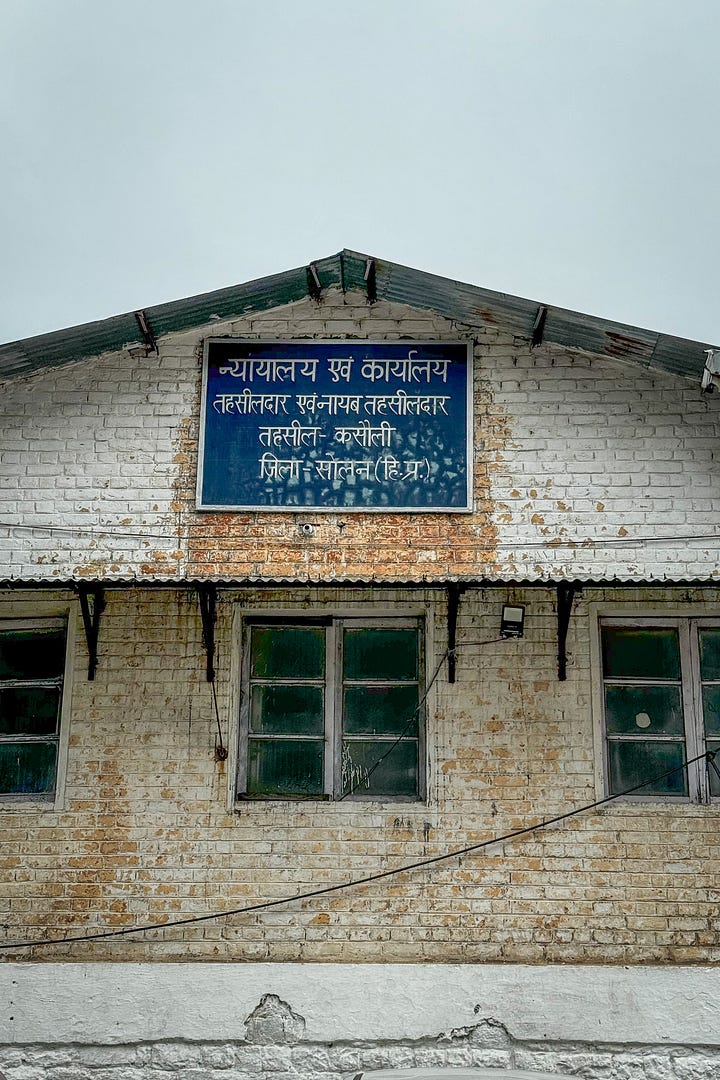
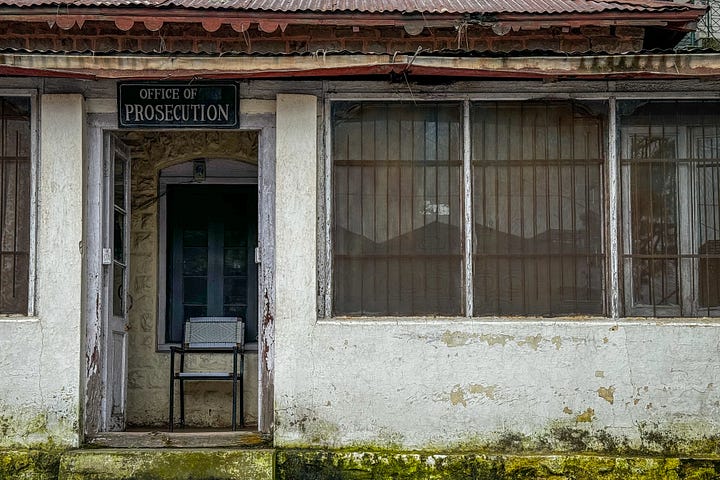
All this walking stirs the appetite and knowing locals counseled us to find Cafe Kasauli 73 and the divine hand of the female owner who makes a sweet Siddu discussed in complimentary tones.
Siddu is a traditional Himachali steamed, bread dumpling. The kind of thing you’d give coal miners to set them up for day’s callus-inducing labour. It’s heavy, gut-lysing stuff that looks like a Cornish pasty and an armadillo once frotted. Naturally, we order two, with coffees. We struggled to finish one. The sticky sweet Siddu felt like Dickensian stodge in the best possible way; the walnut Siddu arrives with a nose-blast of green chilli chutney. The appeal is simple: on the coldest of days, soporific Siddus bring warming satisfaction.
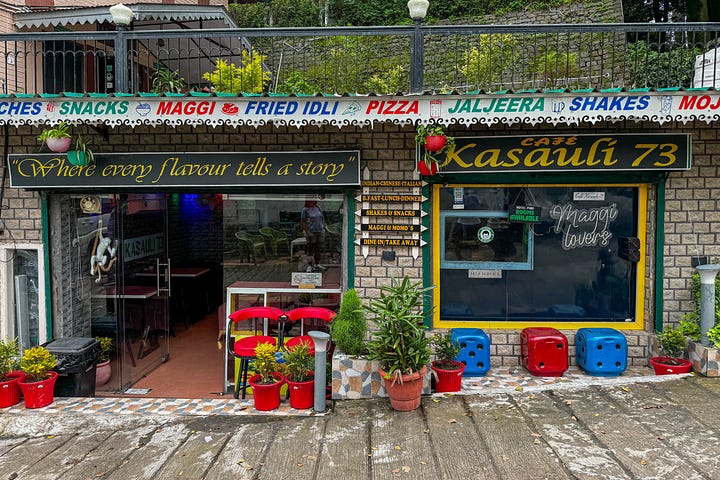
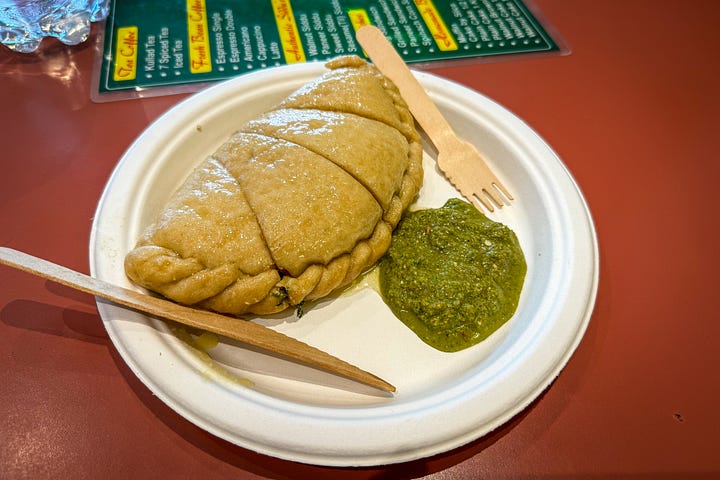
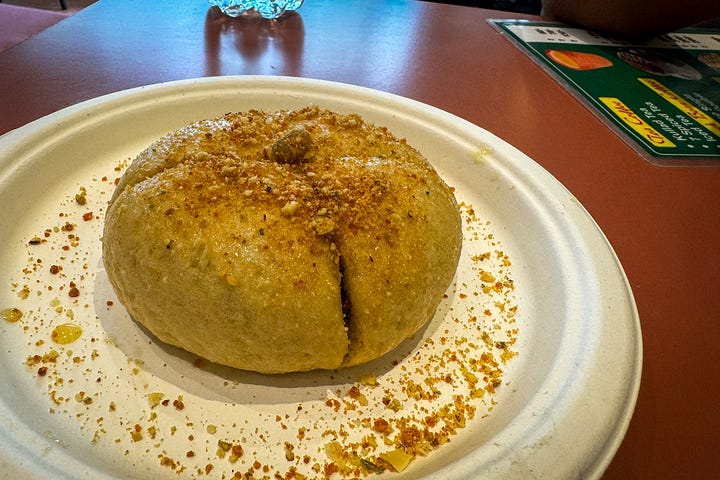
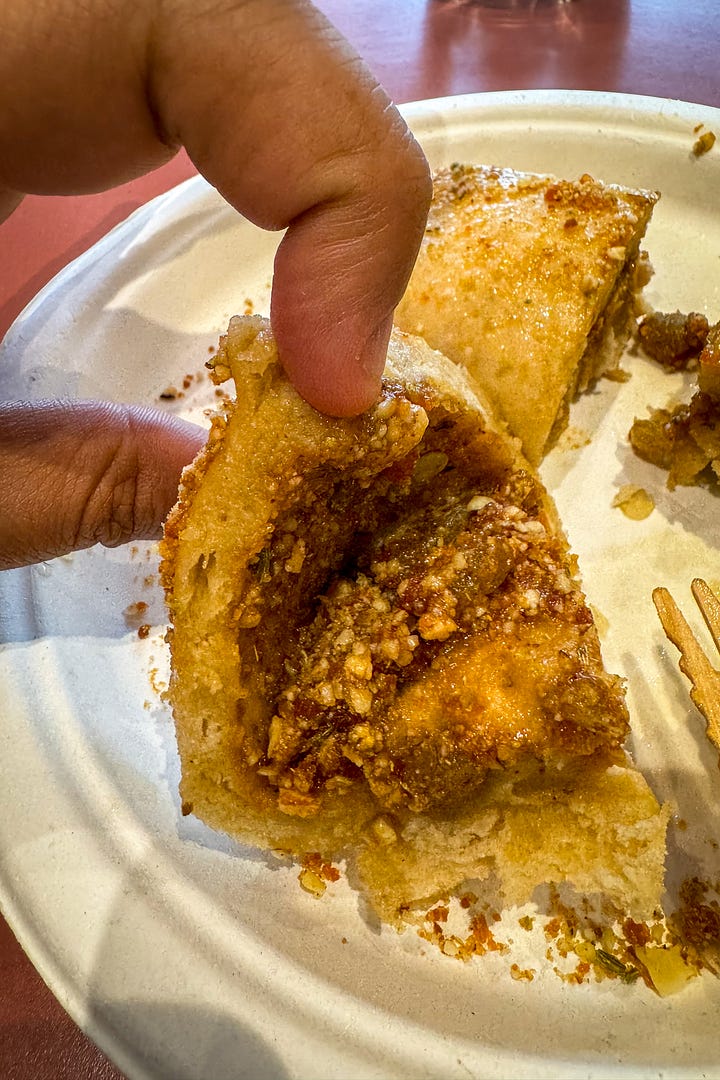
The day grows long and we head back to Daleside Manor walking through Kasauli, passed the buildings and the mountain paths that brought us here. A man fans corn roasting over a coal-fired grill while my friend applies 15 years of corporate law negotiations into reducing the price of Jamun, that Kasauli gin. We would not come back the next day as time would not allow it. We lost half of the trip due to the extraordinary events of the previous day. That night, I would brave the tightrope-slender roads to Restaurant NAAR.

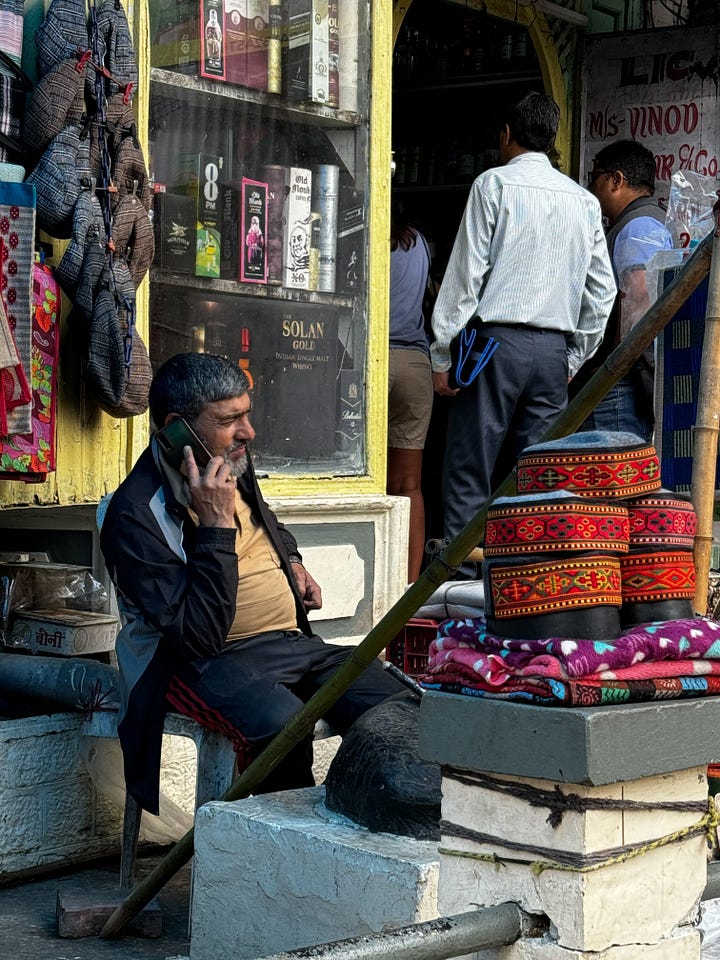
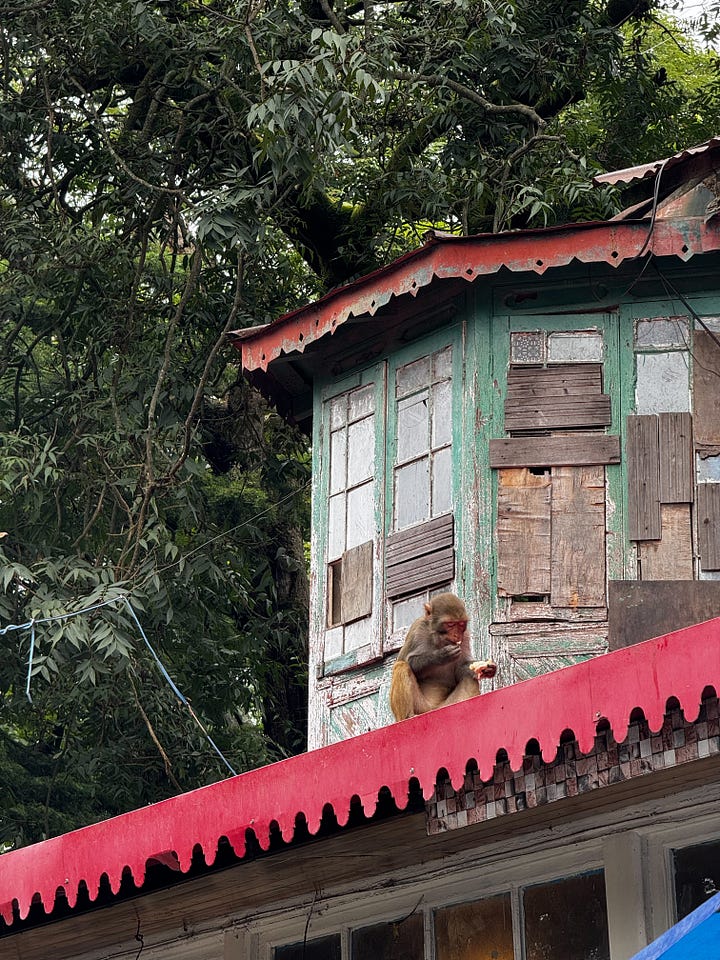
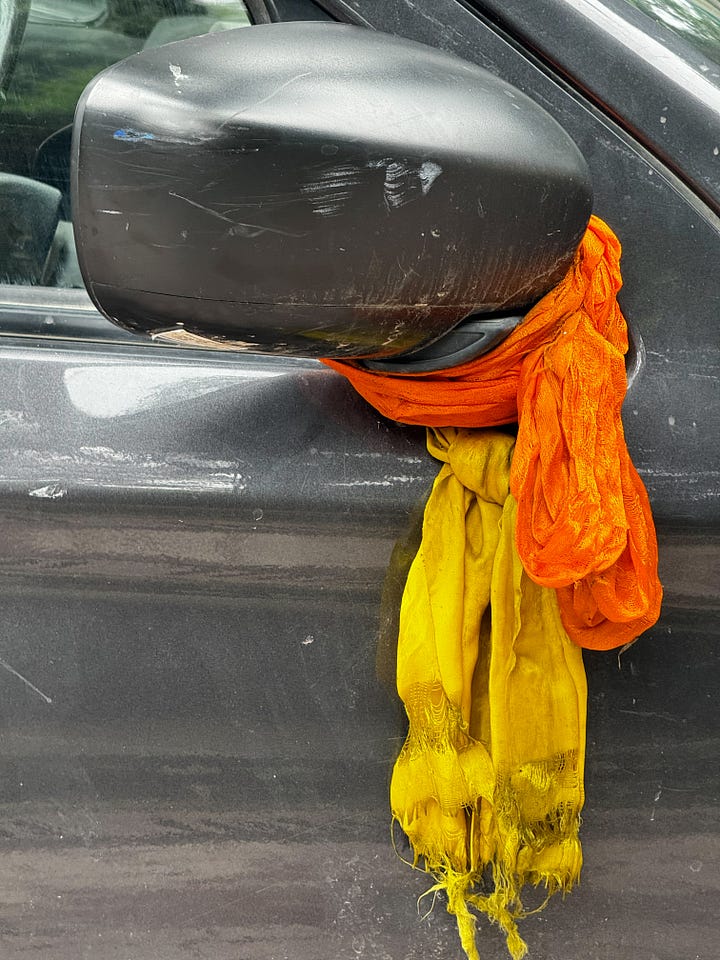
Kasauli, would I return?
I went in with bare expectations. I knew it would be remote and rural. I hoped for moments of natural beauty and a quiet gaze on the horizon where the Himalayan peaks slip in and out of view.
I did not expect Kasauli to be so green, so lush; so hallmarked with colonial vestiges or so obviously consumerist with it’s Maggi posters and maraudes of TikTok creators (especially when TikTok is banned in India).
The pace is pleasingly slower. Like a mosaic, the big picture tells a broader story than the details. Like staring at a TV too close, it is hard to make sense of what you see and you might hurt your eyes staring too long.
But I would return to Himachal Pradesh unquestionably.
I would bring my wife and son because Dubai is a delightful but saccharine life. Getting out and seeing the world—this world—feels more grounding.
Kasauli was delightful as a base, but I long to check out Shimla or go further north. I want to see Kufri wrapped in snow, explore the mountain pass of Rohtang La and the temples of Chehni Kothi.
I want more, but more than what is here. But, I would miss Daleside Manor.
Liam is a restaurant critic, food and travel writer based in the Middle East. He owns EatGoSee and contributes to others. You can follow him here on Substack, Instagram, Threads or Facebook.
Related Stories, ICYMI
Restaurant NAAR: Audacious Dining in India’s Himalayas
The drive is not for the faint of heart. It’s all white knuckle, toe-curling and frankly a reckless folly for a man who wondered if he would single parent an infant and wife as the car’s tyres skirt the edges of a vertical drop somewhere around Banti



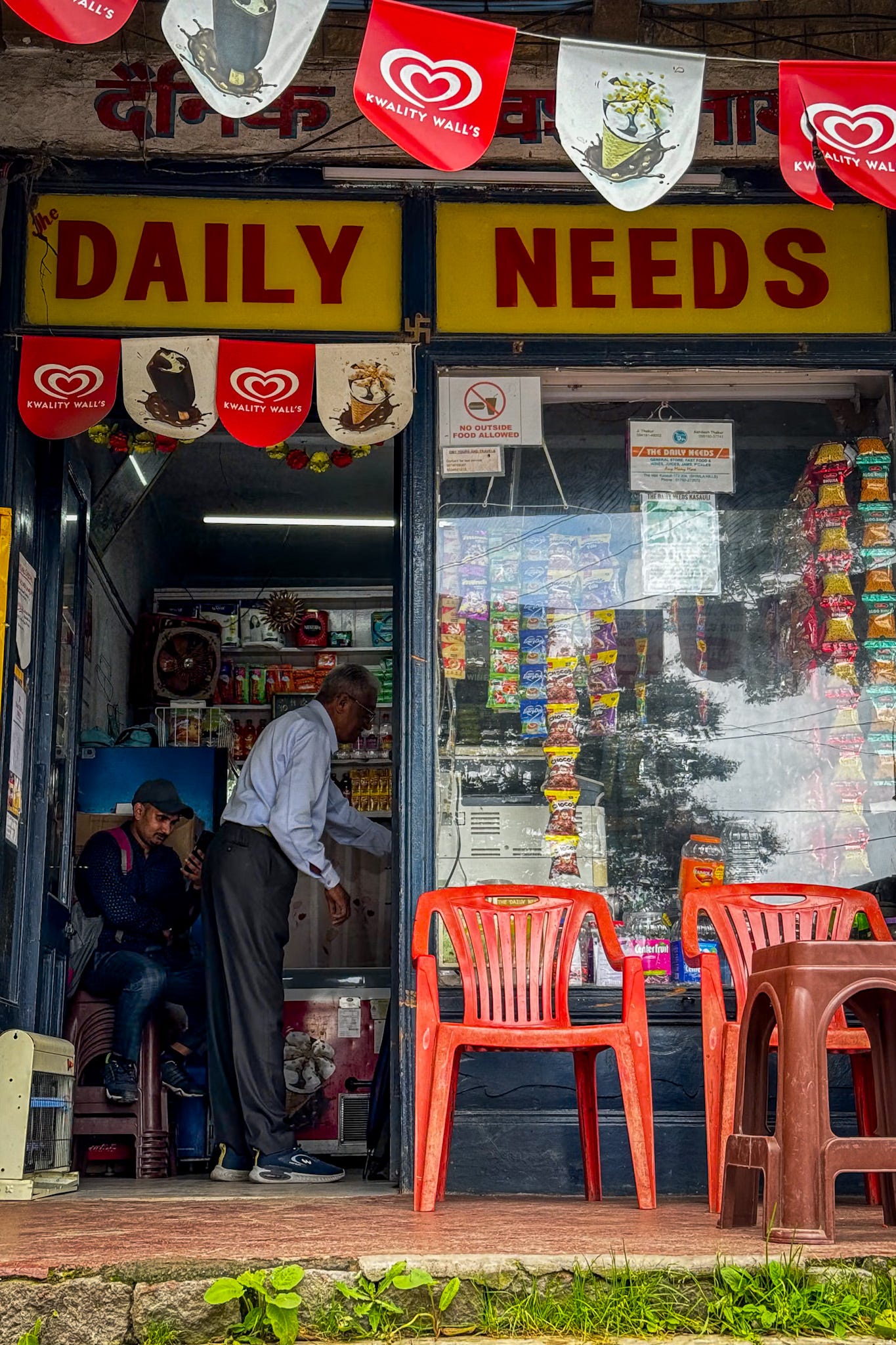
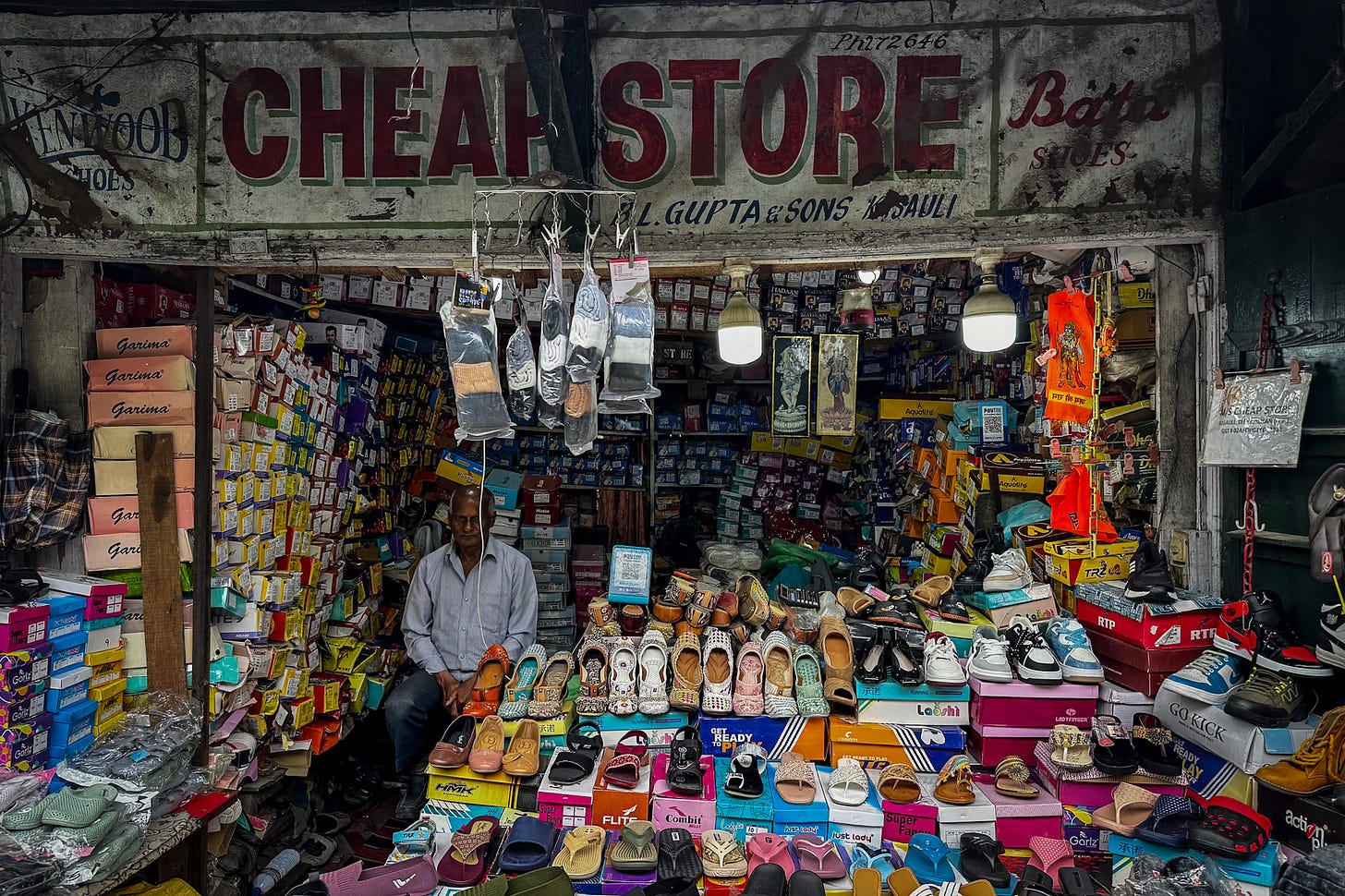
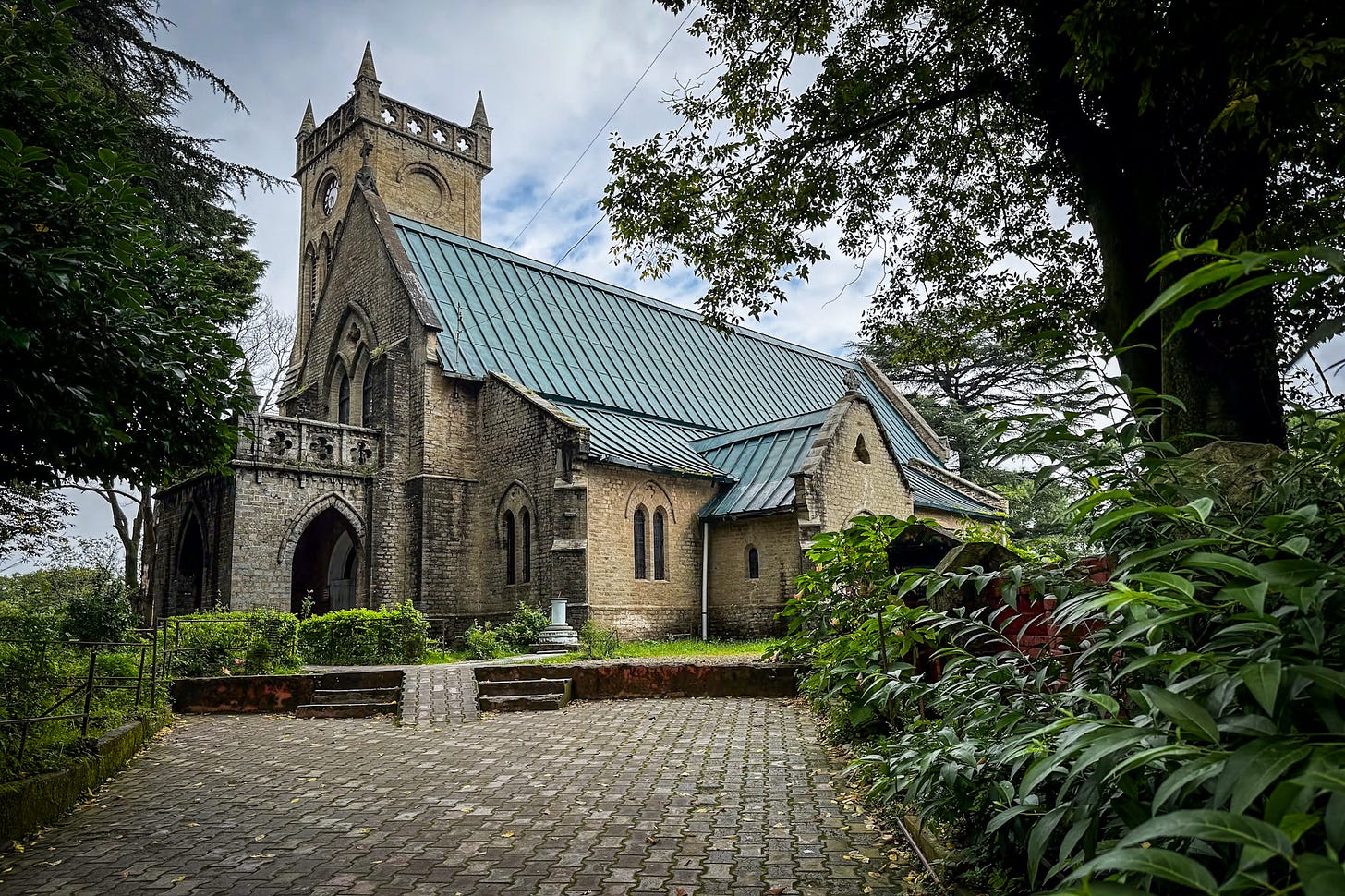
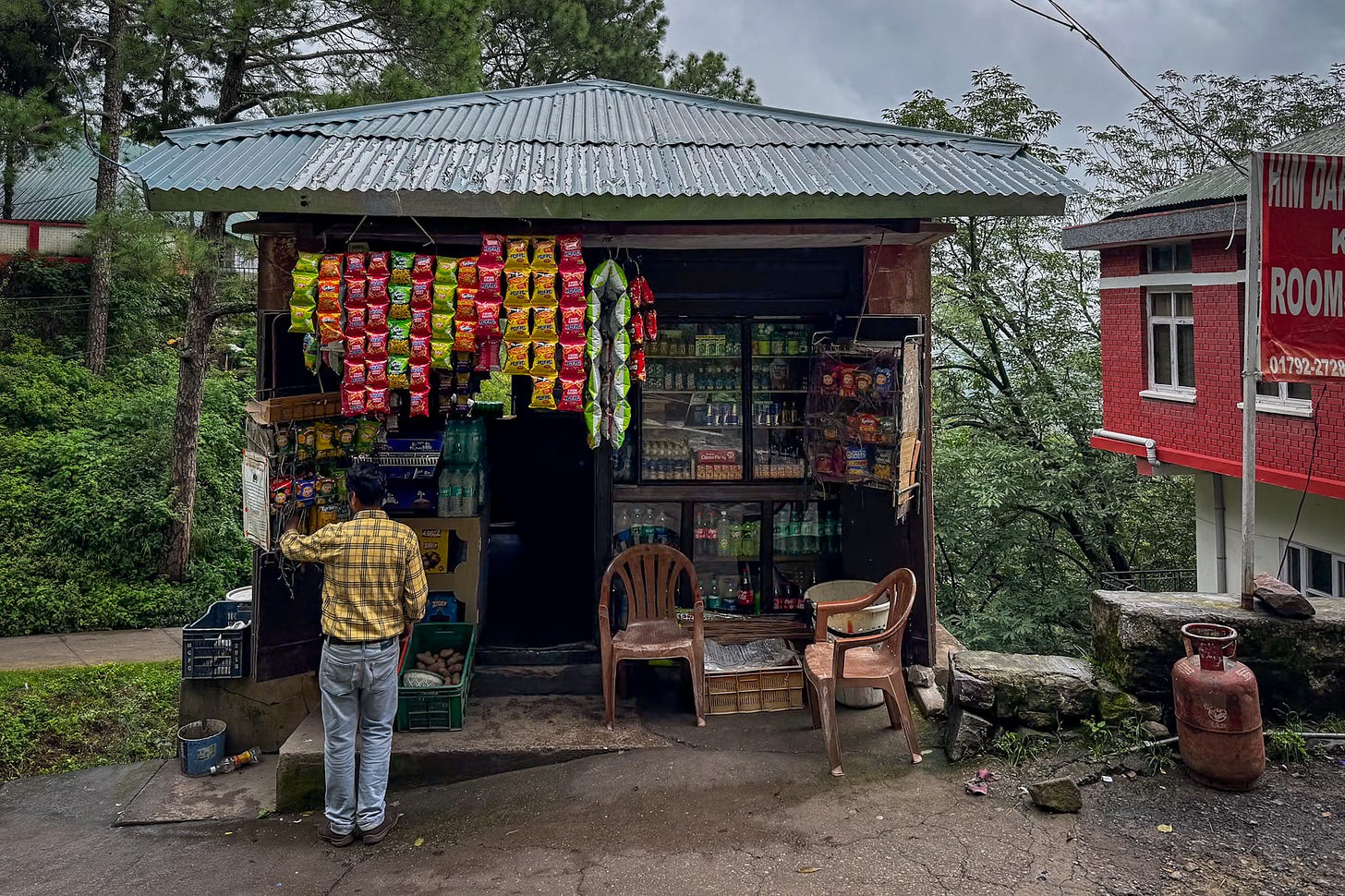
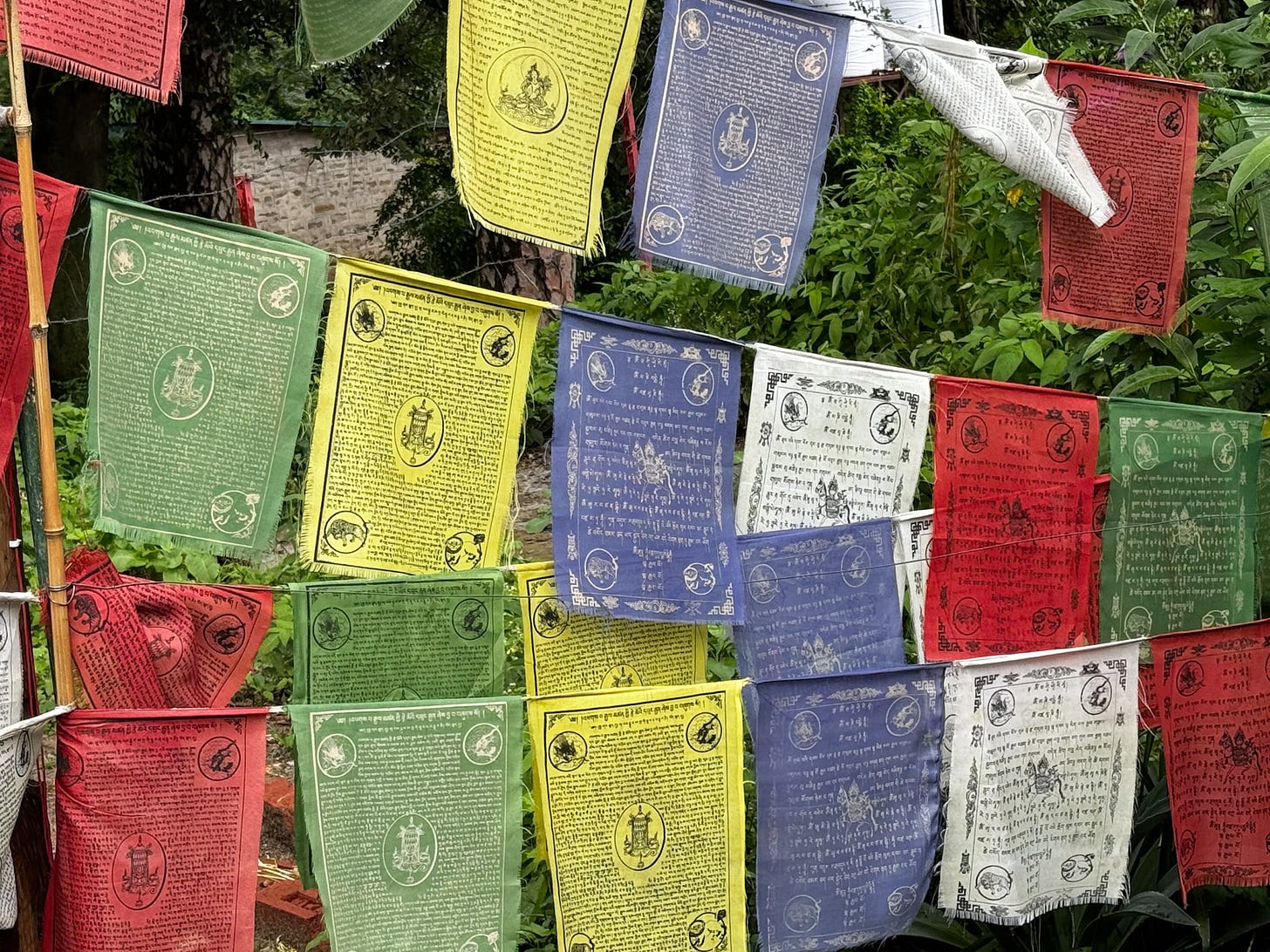
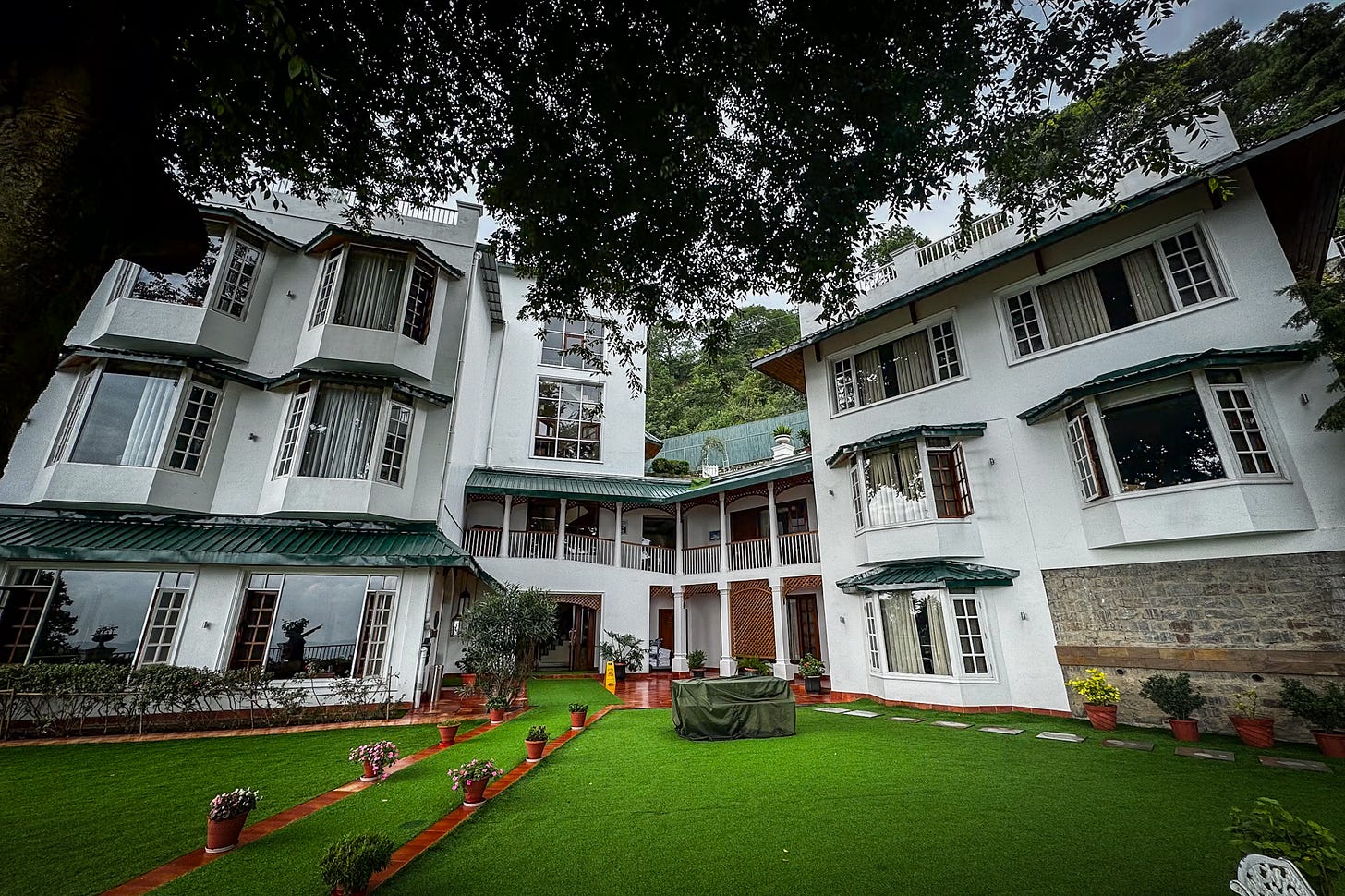
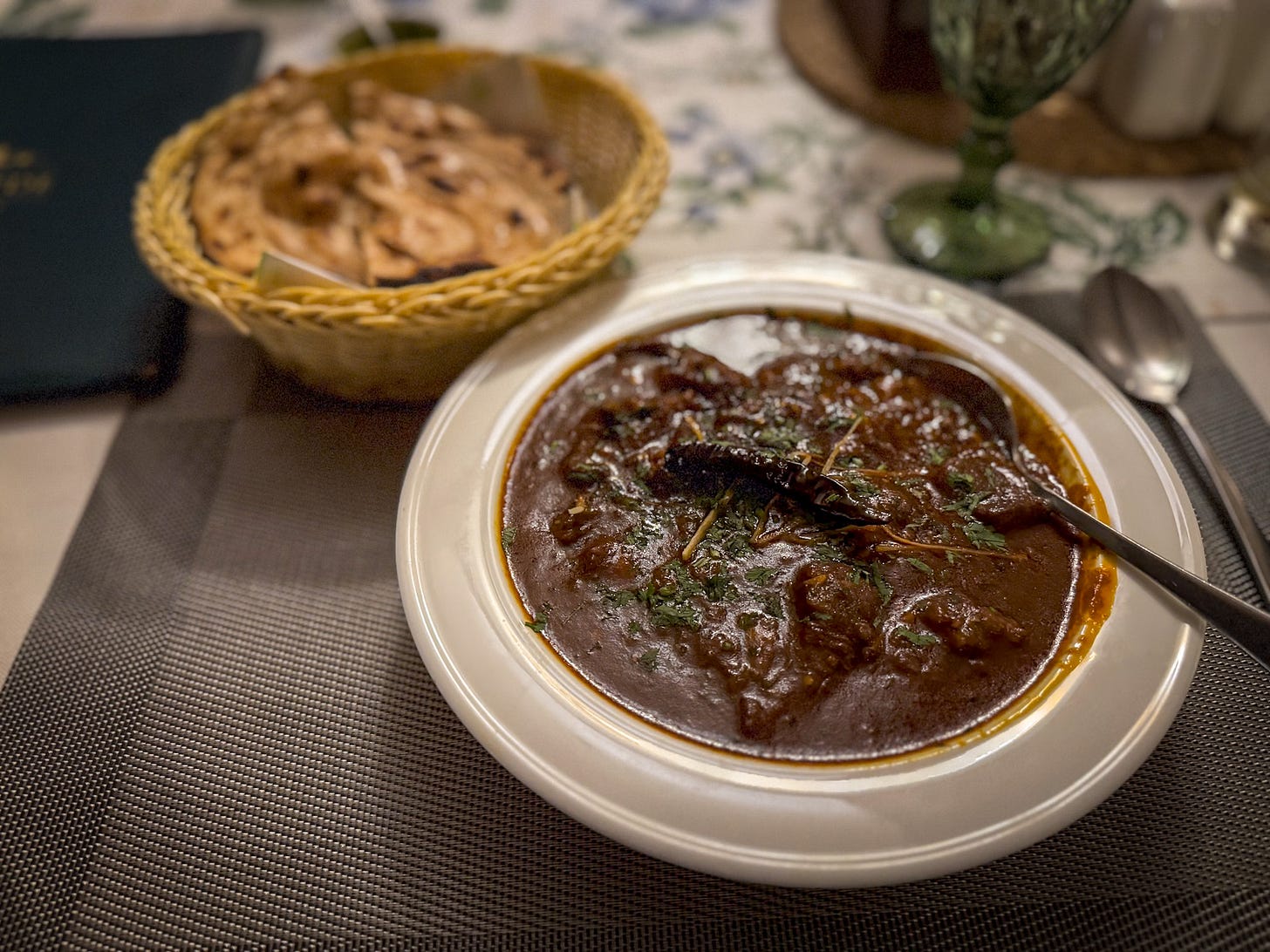
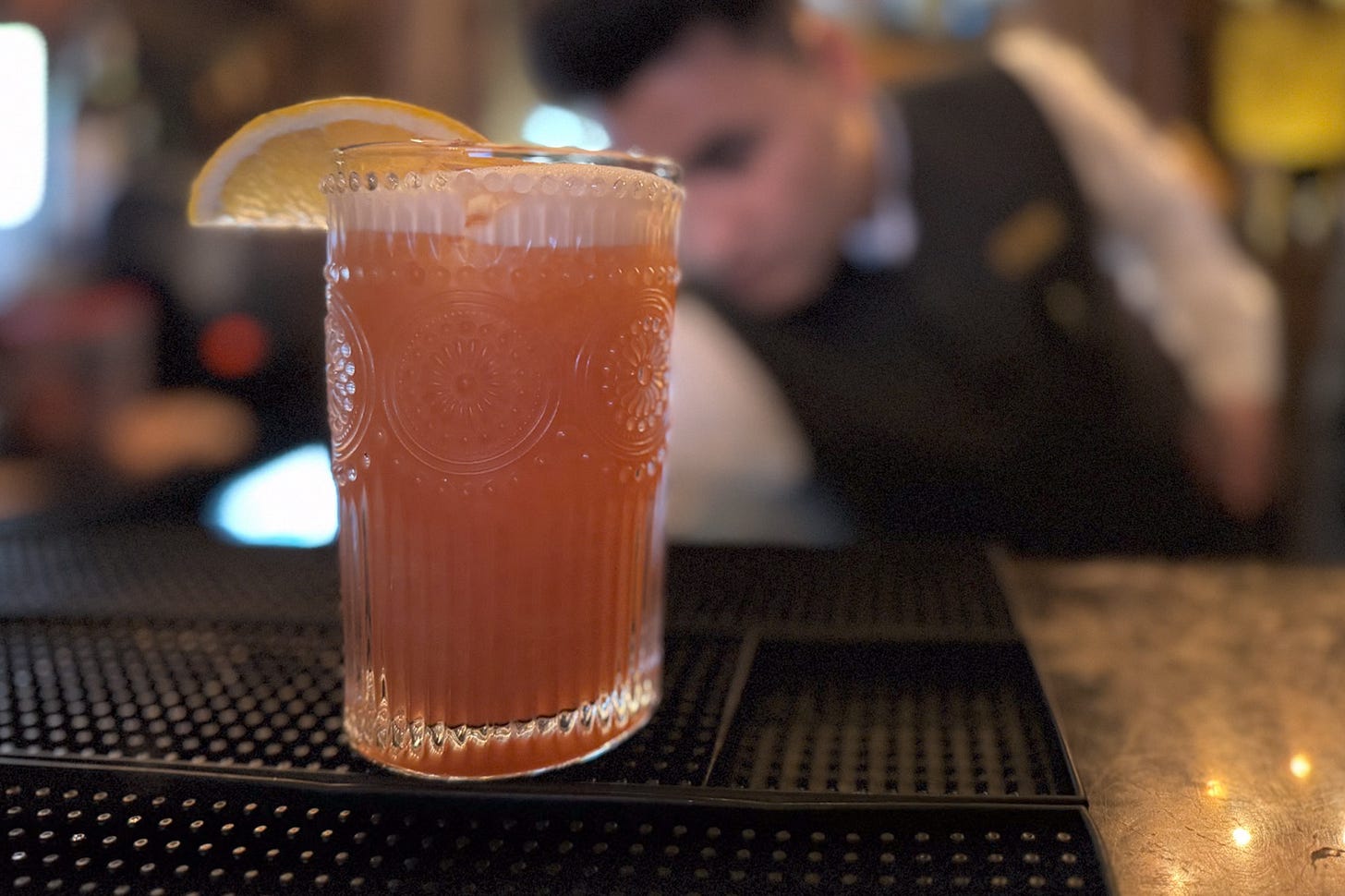
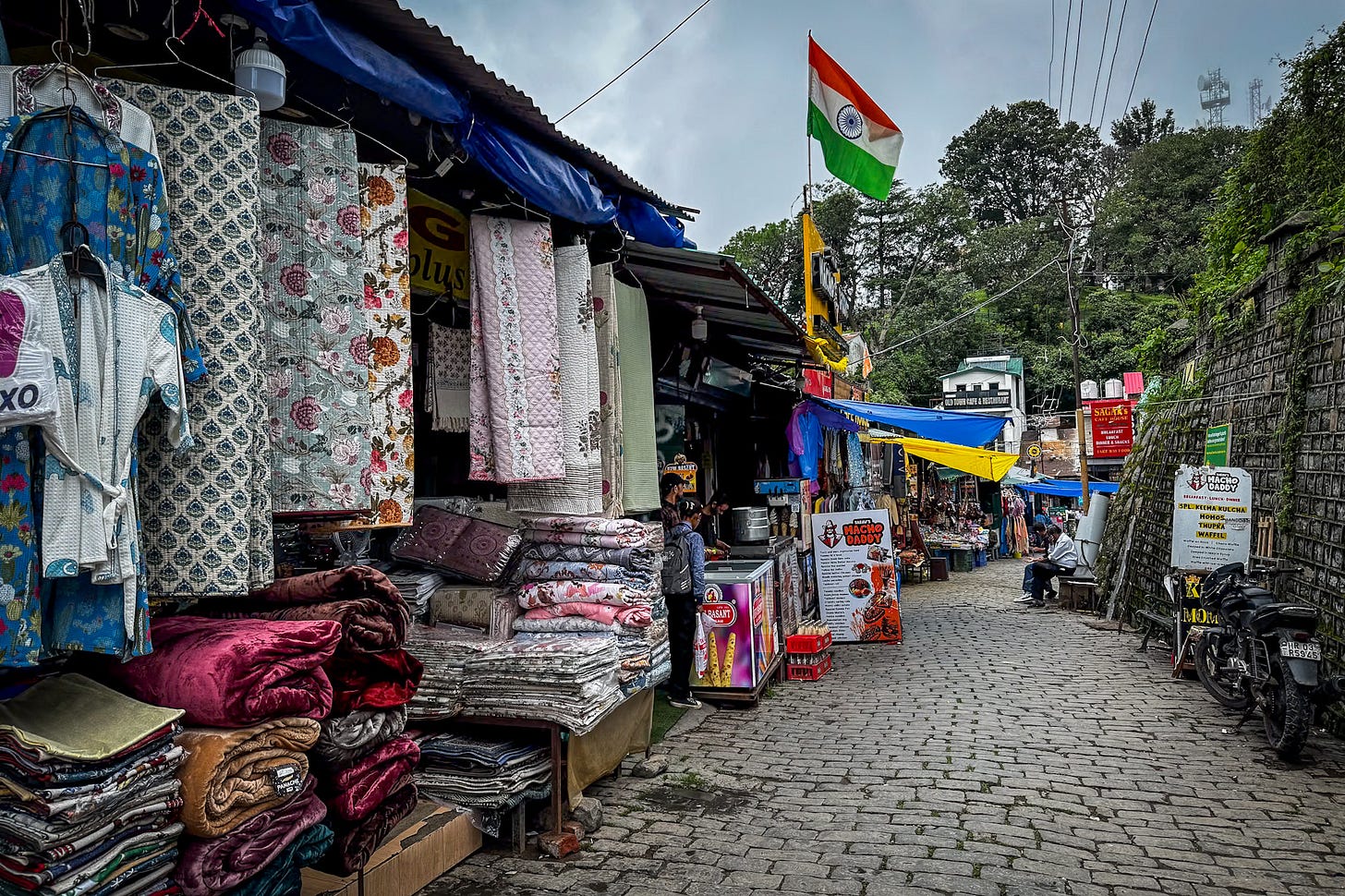
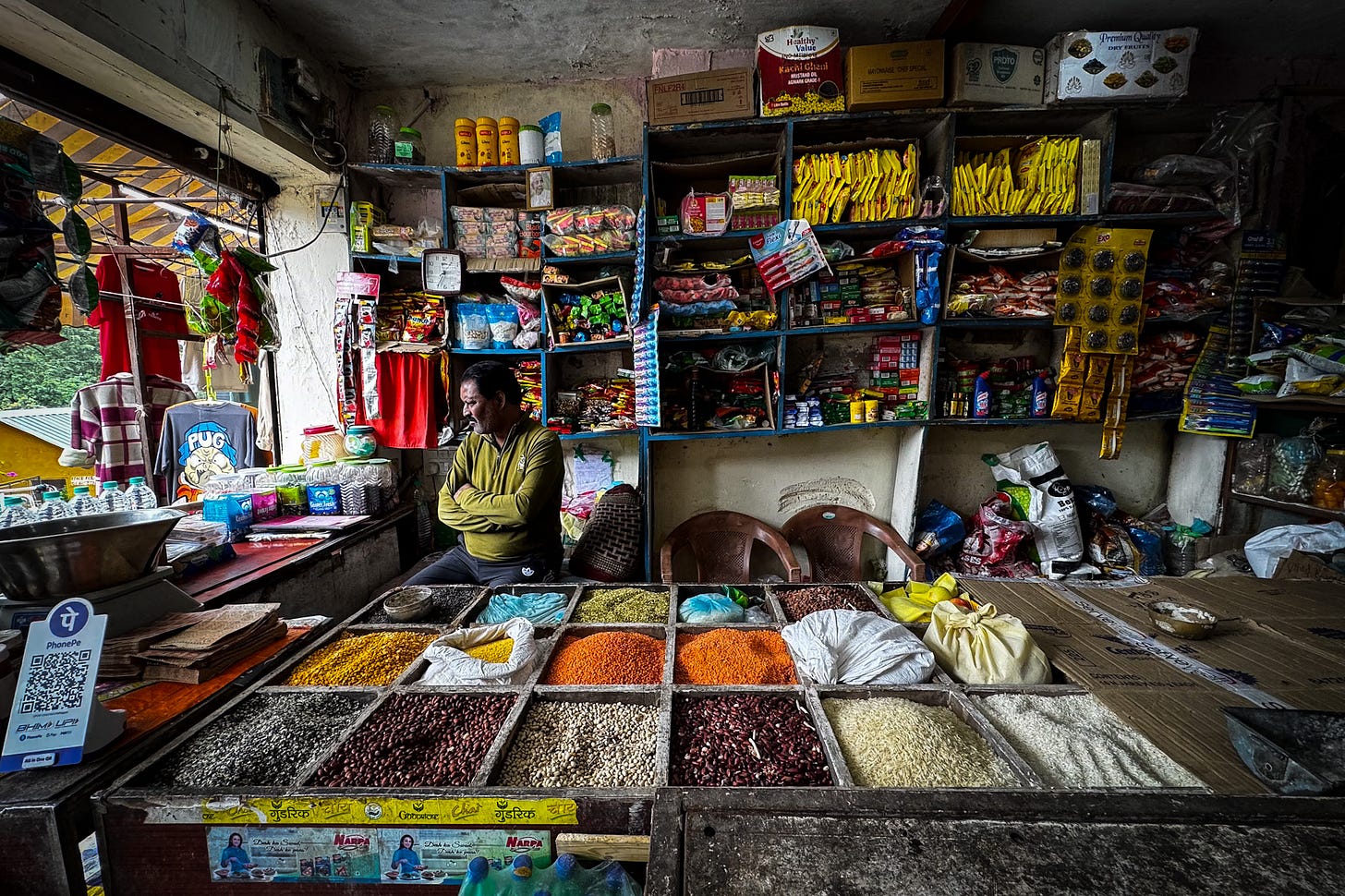
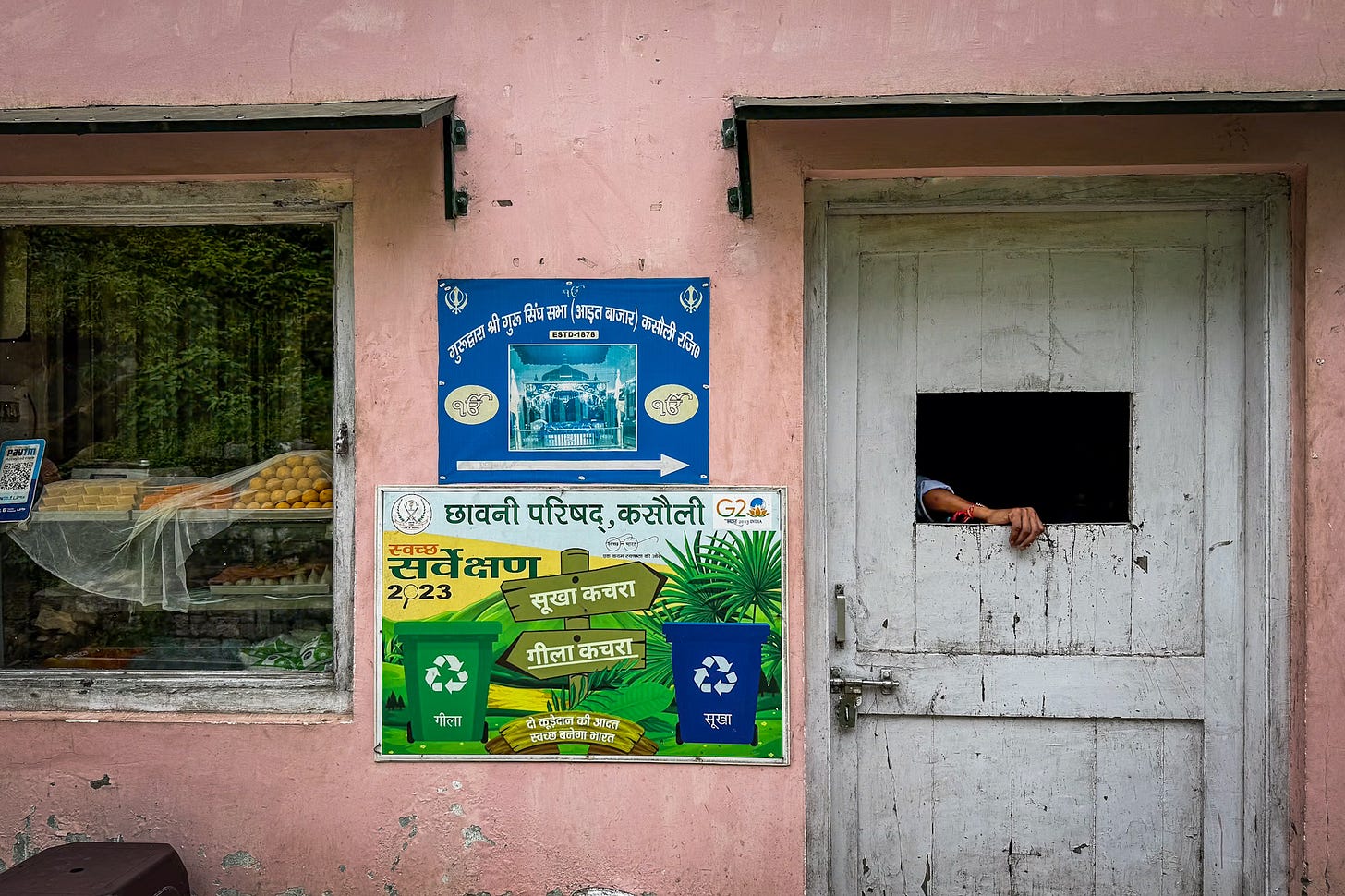
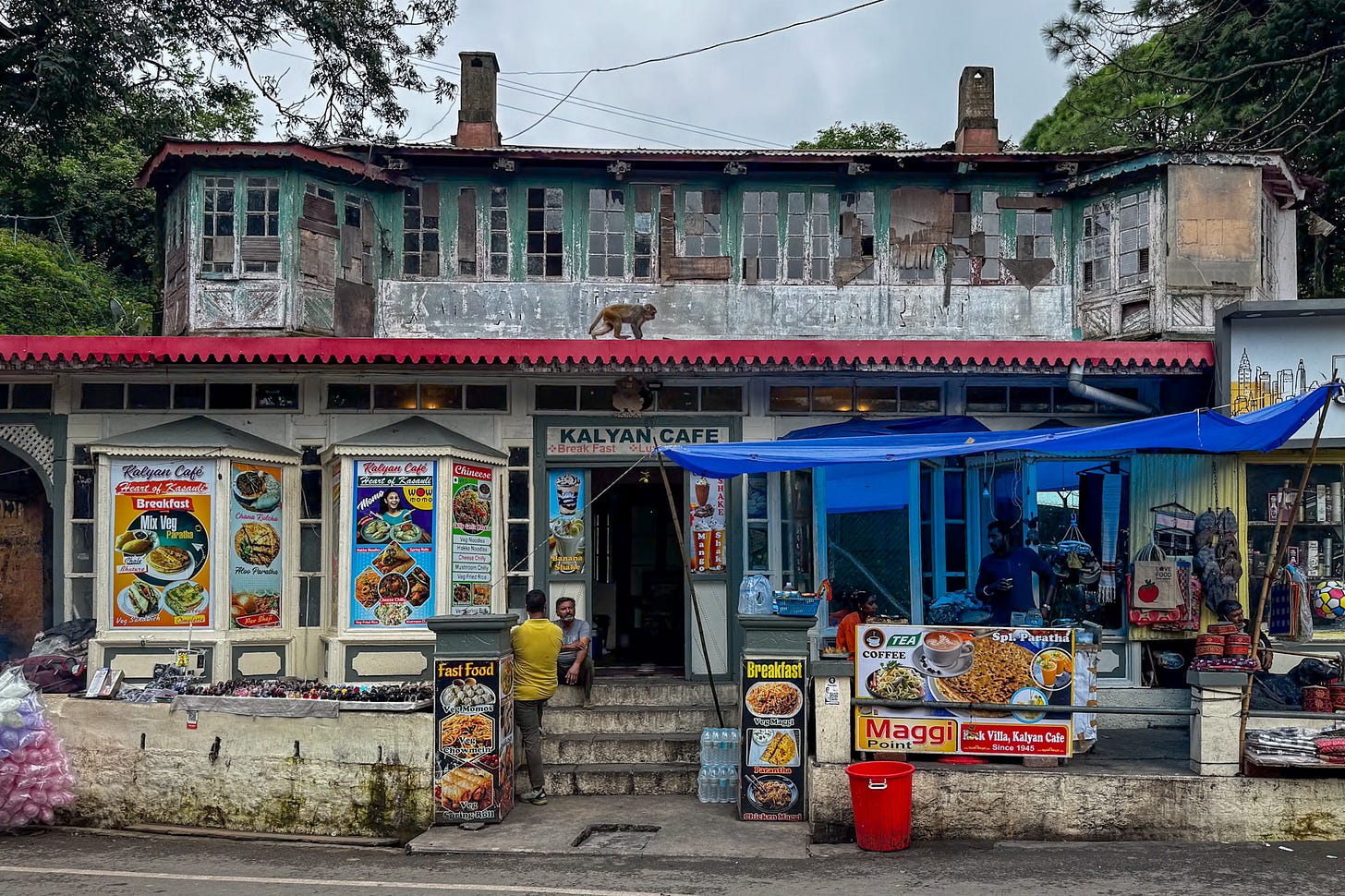

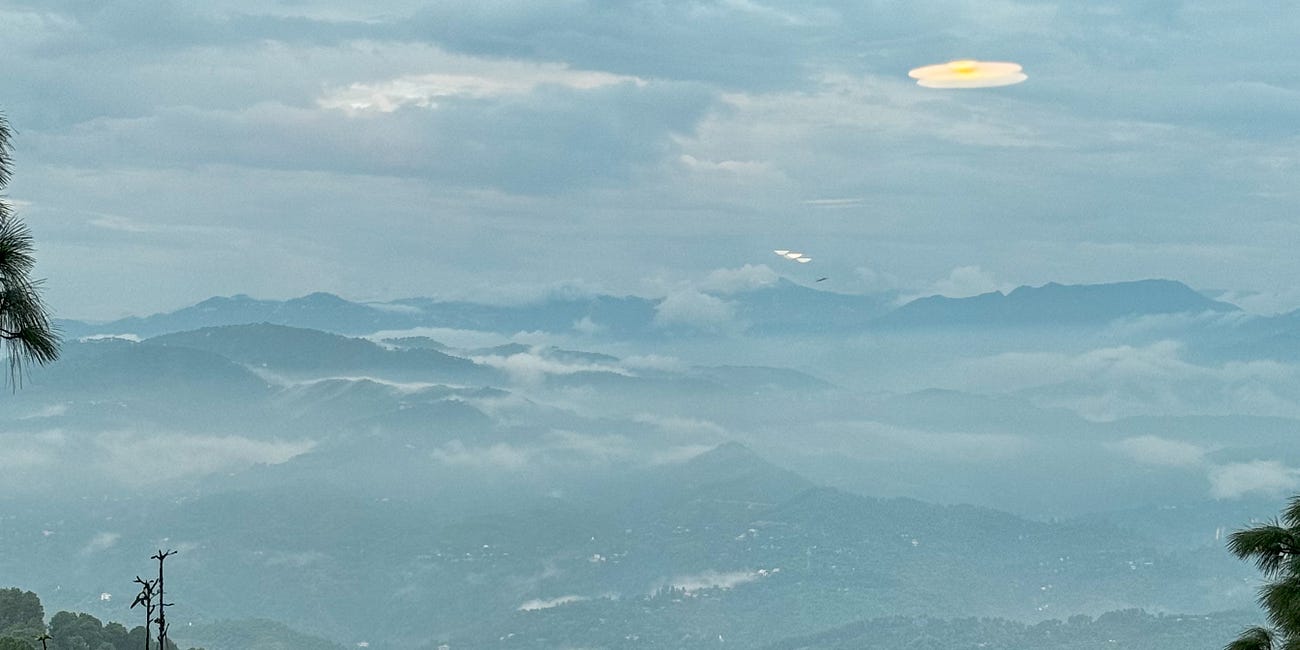
Yet another enticing read Liam